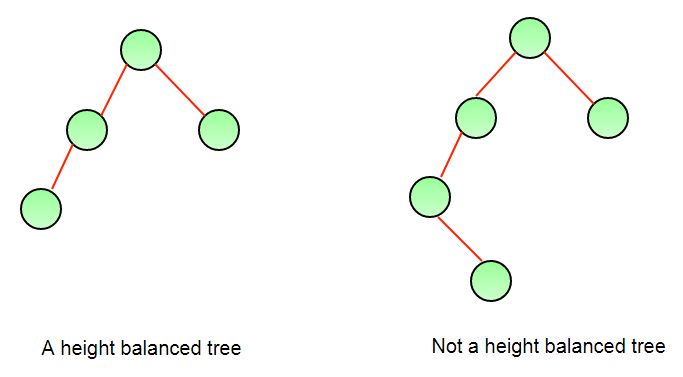Examples: The tree on the left is a height balanced binary tree. Whereas the tree on the right is not a height balanced tree. Because the left subtree of the root has a height which is 2 more than the height of the right subtree.

Naive Approach: To check if a tree is height-balanced:
Get the height of left and right subtrees using dfs traversal. Return true if the difference between heights is not more than 1 and left and right subtrees are balanced, otherwise return false.
Below is the implementation of the above approach.
Tree is not balanced
Time Complexity: O(n^2) in case of full binary tree.
Auxiliary Space: O(n) space for call stack since using recursion
Efficient implementation: Above implementation can be optimized by
Calculating the height in the same recursion rather than calling a height() function separately.
- For each node make two recursion calls – one for left subtree and the other for the right subtree.
- Based on the heights returned from the recursion calls, decide if the subtree whose root is the current node is height balanced or not.
- If it is balanced then return the height of that subtree. Otherwise, return -1 to denote that the subtree is not height balanced.
Below is the implementation of the above approach.
Balanced
Time Complexity: O(n)
- Because we are only one dfs call and utilizing the height returned from that to determine the height balance, it is performing the task in linear time.
Auxiliary Space: O(n)


0 Comments